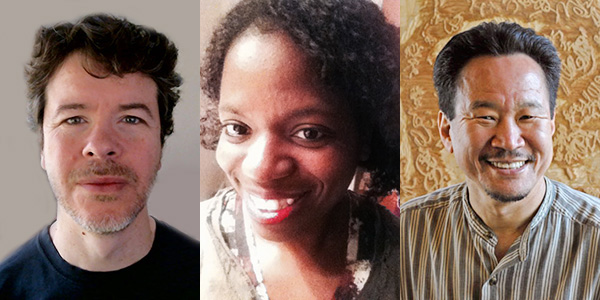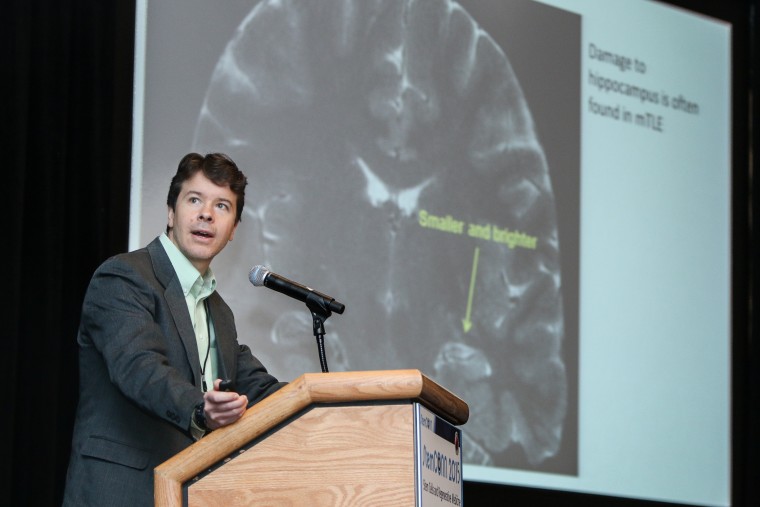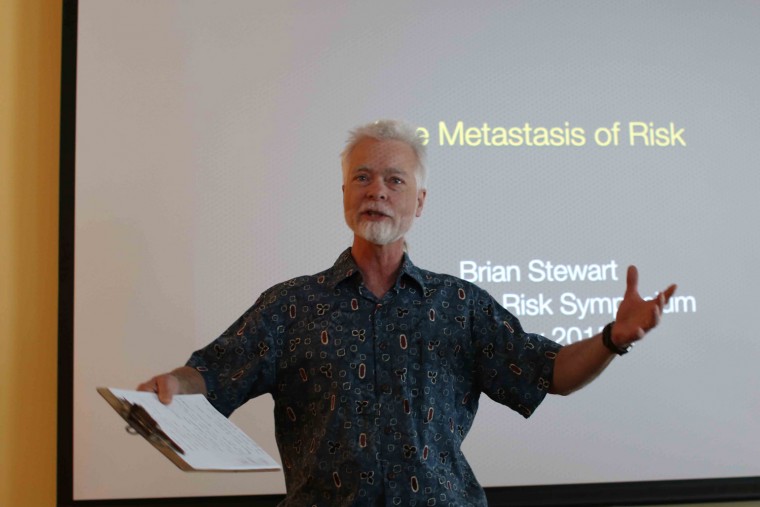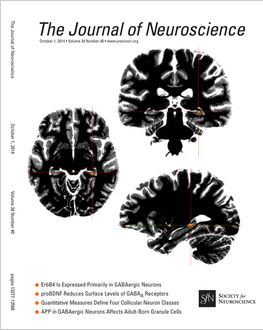Every spring, Wesleyan recognizes outstanding faculty with three Binswanger Prizes for Excellence in Teaching. This year's recipients include Gloster Aaron, associate professor of biology, Robyn Autry, associate professor and chair of sociology, and Keiji Shinohara, artist-in-residence. Made possible by gifts from the family of the late Frank G. Binswanger Sr., Hon. ’85, these prizes underscore Wesleyan’s commitment to its scholar-teachers, who are responsible for the University’s distinctive approach to liberal arts education. (more…)
Adult neurogenesis, a process whereby new neurons are added to the brain, is thought to be confined in mammals to just a few regions, including the hippocampus, a structure important for learning. Whether this process occurs in the adult human brain is controversial, but in most other mammals that have been studied, adult neurogenesis in the hippocampus appears to be essential for forming memories. Producing new neurons in the adult hippocampus is regulated by the environment, mood, exercise, diet, and disease. In some forms of epilepsy, the production of new cells in the hippocampus, called granule cells, becomes highly abnormal and…
Wesleyan faculty members played key roles in StemCONN 2015, Connecticut's stem cell and regenerative medicine conference, held April 27 in Hartford, Conn. Janice Naegele, professor of biology, professor of neuroscience and behavior, director of the Center for Faculty Career Development, served on the conference's organizing committee for the second time this year. Gloster Aaron, associate professor of biology, associate professor of neuroscience and behavior, spoke at the conference on "Investigating how transplants reduce seizures: brain slice electrophysiology and ontogenetic stimulation of transplanted cells." He discussed the collaborative work being done by his lab and those of Naegele and Laura Grabel, the Lauren B. Dachs…
On May 2, the Wesleyan Symposium on Risk brought together faculty and students for an interdisciplinary discussion of risk. The event was sponsored by American Studies, the Center for the Humanities, the College of Letters, Feminist, Gender and Sexuality Studies, the Patricelli Center for Social Entrepreneurship, the Neuroscience and Behavior Program, the Science in Society Program, and the Huffington Foundation Professor of Economics and Environmental Studies support funds. (Photos by Hannah Norman '16) (more…)
Jan Naegele, Gloster Aaron and several Wesleyan researchers are the co-authors of an article titled "Long-Term Seizure Suppression and Optogenetic Analyses of Synaptic Connectivity in Epileptic Mice with Hippocampal Grafts of GABAergic Interneurons," published in the October 2014 edition of The Journal of Neuroscience, Issue 34(40): 13492-13504. Naegele is professor of biology, professor of neuroscience and behavior, and director of the Center for Faculty Career Development. Aaron is associate professor of biology, associate professor of neuroscience and behavior. The article is co-authored by Diana Lin '15; graduate students Jyoti Gupta and Meghan Van Zandt; recent alumni Elizabeth Litvina BA/MA '11, XiaoTing Zheng '14, Nicholas Woods '13 and…
Janice Naegele, professor of biology, professor of neuroscience and behavior, director of the Center for Faculty Career Development, was awarded a $250,000 grant in September from CURE Epilepsy.org. The grant, which will be given over a period of three years, will fund research examining synaptic function in GABAergic stem cell transplants using optogenics. This technique provides a way to modulate and control the activity of individual neurons in living tissue using discrete delivery of light into the brain or tissue slice. It will be used to investigate how GABAergic stem cell transplants suppress seizures in mice with temporal lobe epilepsy.…
For the roughly one-third of temporal lobe epilepsy patients for whom drugs are not an option, researchers at Wesleyan are paving the way for alternative therapies using stem cells. Faculty members Janice Naegele, Gloster Aaron and Laura Grabel, together with Xu Maisano, Ph.D. ’11, Elizabeth Litvina, B.A. ’10/M.A. ’11, and Stephanie Tagliatela, the lab manager in the Naegele lab, recently published a landmark study in the Journal of Neuroscience on the use of embryonic stem cells to treat temporal lobe epilepsy (TLE). The researchers derived neural “parent cells” in culture from mouse embryonic stem cells, and transplanted them into the…
Gloster Aaron, assistant professor of biology and assistant professor of neuroscience and behavior, has published a new study in PLoS ONE, an international, peer-reviewed online publication. The study is co-authored by four Wesleyan students: Jeffrey Walker BA '08/ MA '09, Greg Storch BA '10/MA '11, Bonnie Quach-Wong '12 and Julian Sonnenfeld '11. In this study, the researchers were able to produce a cortical slice preparation that allows activity to propagate from neurons in one cortical hemisphere to the other hemisphere through the corpus callosum. The corpus callosum is the largest structure that connects the right and left halves of our…
An article written by three Wesleyan faculty and two alumni was published in the January 2012 issue of the Journal of Neuroscience, 32(1): pages 46-61. In "Differentiation and functional incorporation of embryonic stem cell derived GABAergic interneurons in the dentate gyrus of mice with temporal lobe epilepsy," the authors describe embryonic stem cell derived neuronal transplants for treating temporal lobe epilepsy. The authors include Jan Naegele, professor of biology, professor of neuroscience and behavior; Gloster Aaron, assistant professor of biology, assistant professor of neuroscience; Laura Grabel, the Lauren B. Dachs Professor of Science and Society, professor of biology; Xu Maisano Ph.D. '11; and Elizabeth…
Faculty, alumni and students from the Biology Department and Neuroscience and Behavior Department have an article titled “STEP regulation of seizure thresholds in the hippocampus,” published in Epilepsia, Volume 52, Issue 3, March 2011. Epilepsia is the journal of the International League Against Epilepsy. The paper’s co-authors include Gloster Aaron assistant professor of biology, assistant professor of neuroscience and behavior; Janice Naegele, professor of biology, professor of neuroscience and behavior; Stephen Briggs BA ’07, MA ’08, Jeffrey Walker BA ’08, MA ’09, and biology Ph.D. candidate Kemal Asik. Paul Lombroso, a professor at Yale University, contributed to the report. This…






